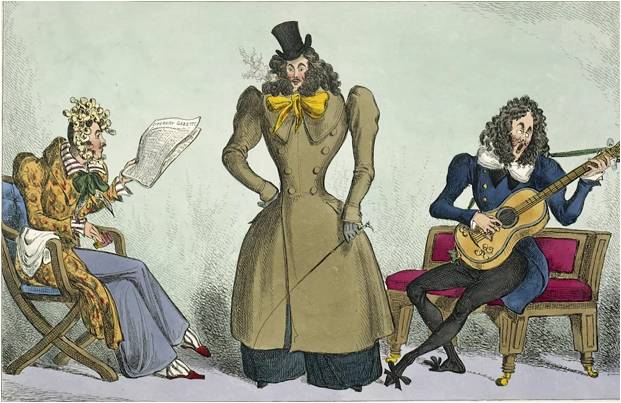Men, Women and Guitars in Romantic England
Men, Women and Guitars in Romantic England (Gresham College). By Professor Christopher Page. The guitar is arguably the most widely cultivated instrument in the world. At a time when fifty or more pianos are broken up for scrap in Britain every week - sad relics of Victorian parlour entertainment - sales of guitars have never been higher.
Nonetheless, it has been almost universally forgotten that there was an intense guitar craze in England between about 1800 and 1835, spanning the lifetimes of Keats, Byron, Shelley and Coleridge, and a craze whose history has never been traced. Histories of English music and society in the nineteenth century continue to be written as if it never happened,
and yet the instrument was cultivated from the royal family in the person of Princess Charlotte (d. 1817) down to the poorest laundress.
This is much more than the story of an instrument and its music: the rise of romanticism, the creation of an urban poor hungry for self improvement, the proliferation of newspapers, serialised fiction and printed sheet music, the social position of women and other aspects of English society and culture in the wake of the Napoleonic Wars all have a place within it.
Christopher Page is Professor of Medieval Music and Literature, a Fellow of the British Academy and a Fellow at Sidney Sussex College, University of Cambridge.
(from gresham.ac.uk)
 |
The 'Romantic' Guitar
This lecture will explore the beginnings of the guitar craze in Regency England around the time of Keats' birth in 1795, as a form of salon amateurism.
Being a Guitarist in the Time of Byron and Shelley
With a player's insight (a guitar of 1825 is my main instrument) this lecture explores the experience of the Regency guitarist: the day-to day business of buying and learning the instrument for the purposes of cutting a figure as a salon amateur or indeed as a professional.
The Guitar, the Steamship and the Picnic: England on the Move
In the early nineteenth century, there developed an intimate and unique association between the eminently portable guitar, an instrument capable of full harmony, and new forms of travel.
The Guitar and the Romantic Vision of the Medieval World
Between approximately 1750 and 1850, interest in the Middle Ages was fed by many activities with porous boundaries, including the antiquarianism of those who collected coins, seals and armour and the collection of poems generally called 'ballads' regarded as the core materials of nascent national literatures.
Harmony in the Lowest Home: The Guitar and the Labouring Poor
By the 1830s, guitars could be bought very cheaply at pawnbrokers' shops, market stalls and the humblest of the 'musical repositories' that sprang up in response to the spread of musical amateurism.
The Guitar and the 'the Fair Sex'
By the 1830s, caricaturists had begun to show the fashionable guitarist as a man’s instrument, but musical ability at the amateur level with guitar, harp or pianoforte was insistently gendered as female.
| Related Links |
| Introducing Music This course covers the technique of listening to music, the elements of music, musical forms, and historical styles. |
| The Story of the Guitar This is a three-part BBC documentary series presented by Alan Yentob, telling of how the guitar became the world's favorite instrument. |